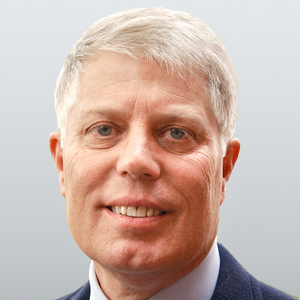The Progressive Leadership’s New Plan to Impose High-Cost, Low-Quality Medical Care
Distressed Patriotic Flag Unisex T-Shirt - Celebrate Comfort and Country $11.29 USD Get it here>>

Commentary
With a budget surplus of more than $200 million, the California legislature is thinking big, really big, and that means one thing: single-payer government health care, which recently was introduced as AB 1400.
Notes the Los Angeles Times: “This measure … would completely change health care coverage for Californians. Insurance companies would be shoved aside. People would be switched from their current coverage—whether private, federal Medicare or Medi-Cal for the poor—to a new state-run plan called CalCare.
“The purpose is to cover everyone and reduce health care costs by eliminating private insurance overhead and profit—and negotiating lower provider fees and drug prices. There’d be no premiums, co-pays or deductibles. And many services would be added, including dental, vision, hearing and long-term care for Medicare beneficiaries.”
Of course, there are costs, and the projected cost of such a venture always is going to be front and center. When the California state legislature first began to debate single-payer in 2017, Vox came out with an analysis that set the price tag of this proposed venture at $400 billion a year, or twice the entire state budget at that time. While citing possible costs in the form of dollar outlays can be present, nonetheless, such an analysis creates its own set of problems and tells a very incomplete story, economically speaking. When government policies are enacted or proposed, the discussion forms around the proposed monetary outlays, as though the entire thing were “doable” provided governments can come up with the necessary funds.
Once projected or anticipated monetary outlays become the subject of the political debate, the questions shift to whether or not governments can take in the money necessary to make the project work, without looking at the much bigger picture of what costs really mean. In the case of completely turning all medical care in California over to a government agency, proponents of single-payer in general attempt to tout alleged cost savings, which are framed in terms of what is currently spent in the present system overall.
The legislative newsletter CalMatters recently reported: “A legislative analysis released Thursday estimated single-payer could cost California between $314 billion and $391 billion annually, financed by a series of tax hikes on businesses, workers, and high earners. Single-payer supporters, however, say that sum is smaller than what Californians pay for private insurance.” (emphasis mine)
Supporters’ implication is that nothing would change in the creation and sale of health care services except that the manner of payment would be taxation and everyone would have all the services they need with no price. All that is needed is “political courage” to vote “yes” and then to enable the California bureaucracies to install the new system.
Yet that hardly is the case. Single-payer would mean that medical care would be purely a state-run affair, which means that all factors of production going into health care in California would be directed by the political system. (Yes, bureaucrats work for the government, and the last time we checked, government still was political.) If California politicians and regulators are determining the services eligible for payment—and the payment amounts—then they effectively control the entire system.
Such a plan is built upon a single assumption: the systems of medical care would be exactly the same no matter the method of payment, and single-payer is nothing more than a means to make this care accessible to more people, especially people with lower incomes. Mildly speaking, this is what economists might call a heroic assumption.
Anyone who believes that politically directed medical care would be a simple extension of the present system—but made affordable—should look at the behavior of both the state and federal governments during the first six months of the COVID-19 pandemic. Governments essentially commandeered hospital resources, ordering them to be devoted almost exclusively to treating COVID-19 patients.
In heavily populated areas such as New York City, COVID-19 patients were crowded into hospitals, but in rural areas, it was a different story. Hospitals were emptied, and many went out of business because they could not admit patients for other ailments: “Weeks ago, hospitals across the country canceled elective procedures, sent non-essential workers home, and ramped up preparation for incoming coronavirus patients. Some big-city facilities have since been swamped by the sick and dying.
“Not rural hospitals. Many in the Missouri and Illinois countryside are nearly empty, hospital officials and industry leaders say. Residents are avoiding them out of fear. But coronavirus patients also haven’t appeared, at least not in the numbers anticipated.
“Now, with many beds empty, rural hospital administrators are increasingly worrying about how they’ll pay their bills.”
Elsewhere, people who needed heart surgery or had scheduled treatments for cancer had those procedures postponed. It didn’t matter if they were in dire need. The only thing that mattered—at least to medical bureaucrats—was clearing the hospitals and redirecting other medical resources to dealing with COVID-19. The value of all other medical resources was driven near zero, not because the actual medical situation required such extraordinary measures, but because government agents wanted to be seen as in charge and leading the fight against a pandemic.
The real cost of how governments dealt with the COVID-19 pandemic was not simply the monetary outlays that came mostly from the federal government (paid out with borrowed money and all that implies), but also the real costs to patients who faced their own medical calamities, including premature deaths, because of denied treatments—because of policies governments imposed.
While some claim that COVID-19 was an extraordinary circumstance that required radical measures, there is no doubt that if California authorities impose a single-payer model, the scope of medical care will change and probably change significantly. Politicians through their medical bureaucrats will demand that medical facilities, along with doctors and nurses, direct resources toward things that score political points with progressive constituencies, such as abortion on demand, COVID-19, monkeypox, or whatever is on the horizon that grabs the headlines.
The real costs of a California program are not the monetary outlays but rather the medical care that will be shoved aside to satisfy political pressure groups. Moreover, the increased state scrutiny that will come from this kind of a system will ensure that administrative actions will be substituted for medical care, as politicians and regulators will act like, well, politicians and regulators.
California progressives have turned their largest showplace cities into sewers of homelessness and crime, and their mismanagement of water resources has become a thing of legend. One only can wait with dread as those same progressives move to do with medical resources what they have done with everything else that has been good in this state.
Views expressed in this article are the opinions of the author and do not necessarily reflect the views of The Epoch Times.






